It’s cold and rainy, the trails are too wet to ride. You’ve watched Connor Fearon’s latest edit at least a dozen times already, your bike is clean, fork serviced and you’re not sure what else to do with yourself. You always hear your roadie friends talking about riding inside, watts per kilo and how much fun they had cutting laps of Repack Ridge last weekend.
There’s a trainer in the shed, but last time you rode the sucker it was about as much fun as a sharp stick in the eye.
In the past five years indoor training has evolved from one of the most universally hated things to one of the cycling industry’s fastest growing sectors thanks to the advent of smart trainers, and training apps like Zwift. Not only will riding inside leave you stronger and faster on the trail, but it’s actually (and we can’t believe we are saying this) fun.


What is Zwift?
Zwift is essentially a video game, and your bike is the controller. You ride through a virtual world on a turbo trainer, and when used with a smart trainer, it will adjust the resistance when you go up hills or enter the slipstream of another rider.
For the time being there are nine worlds: Watopia, Innsbruck, Richmond, New York, London, Yorkshire, Paris, France (yes, there are two worlds in La Métropole) and Makuri Islands which you can ride on a rotating basis, with Crit City and Bologna reserved just for racing.
But isn’t Zwift just for those bikes with skinny tyres and curly bars?
Short answer, no. You can even ride mountain bikes in the game. As a part of its FutureWorks program, Zwift rolled out 3km of single track to test out its steering functionality on a course called Repack Ridge, giving us a glimpse of what’s to come.
But, don’t take our word for it; Samara Sheppard is a three-time New Zealand XCO MTB National Champion, two-time Oceana XCO MTB champ, and was a finalist in the 2019 Zwift Academy, just missing out on a pro contract with the Canyon/SRAM women’s team.
Sheppard started Zwifting when she sustained a severe injury after being hit by a car, and hasn’t stopped since.
“With my injury, I wasn’t allowed to ride outside because there was too much risk, so all I could do was ride the indoor trainer. I started Zwifting, and got addicted; I ended up doing like six weeks, 20-hours a week on Zwift,” she says. “When I was able to ride outside again, I jumped back into racing pretty much straight away, and I couldn’t believe how much stronger I was.”
It’s not just the roadies and XC racers on Zwift, EWS pros like Iago Garay Tamayo, Rae Morrison, Christian Textor, and even friend of Flow, Josh Carlson, have collectively ridden thousands of virtual kilometres through Watopia and burned hundreds of slices of pizza along the way.

Ok, so what is there for specifically mountain bikers?
Like a slightly less-violent and pedal-powered version of Grand Theft Auto, you can choose your ride in the game – take a Specialized Epic, Canyon Lux or Scott Spark for a spin. There are off-road routes like the Jungle Loop which take you on a guided tour past Mayan ruins, over an impossibly long rope bridge and through an old mine, and the aforementioned Repack Ridge section, which incorporates steering, and rewards you for choosing the right lines.
In collaboration with Wahoo, Zwift has run things like the Shred Sessions, where riders like Troy Brosnan, Sam Hill and Richie Rude led group rides, and the app has launched mountain bike specific training plans. But they aren’t stopping there.
James Lalonde, Zwift’s Director of Growth Marketing for Cycling tells us, “We do have events upcoming with Scott (bikes) that will feature MTB, and longer-term, we should expect to see even more content tailored towards the off-road community, including organised rides and races. As for racing, we’re always looking to new formats. However, we also have to stay true to our strengths. For the time being, we have focused on training plans as that’s an area where we know we can help improve people’s (mountain bikers) riding experience.”

Shock! Horror! It’s actually fun
The real genius behind Zwift is that it is gamified training. They have incorporated experience points, levels, achievements, unlockable gear, powerups and even currency, in the form of drops, which can be used towards bikes and wheels in the drop shop. There are rewards for completing challenges and routes, and you can compete against your own personal records as well other Zwifters for KOM/QOM’s for sprints and climbs in every world.

The community
Where Zwift excelled from the start is the social aspect. You can meet up with friends and strangers from around the world, and go for a ride at any time on any day. With the Zwift companion app on your phone, or a Bluetooth keyboard you can text with riders around you, or send ‘Ride ons’ as encouragement.
“It’s got a pretty cool community. There’s lot of great group rides you can join and the convenience of not having to worry about the weather or having daylight, and just being able to fit in a good solid session and have a bit of fun as well”, says Sheppard.
Rides and racing are going on literally 24-hours a day, 365-days a year, so you’ll never have to ride alone if you don’t want to. A couple of good ones to look out for are the AHDR rides: they host a Bacon Roll every morning at 5:50am and then the infamous Hump Day ride every Wednesday at 7 pm. We’re also fans of the Hell Ride at 8am on Saturday mornings, which is three laps around the Wattopia’s Waistband route, the first two at ~3W/kg, and the third is a full bore race. Being a proud New Zealander, Sheppard also suggested the Kiwi Crew Ride, on Thursday’s at 4:30 pm.

You can get your competition fix
With events pretty much off the table at the moment, everybody is itching to test their legs and get those competitive juices flowing. Zwift runs a race seemingly every hour on a range of courses to give you the fix you’ve been jonesing for — just be ready, because Zwift racing is serious business.
The most important thing for Zwift racing is to make sure you sign up for the right category which are chopped up based on W/kg. If you can push 5 W/kg for more than a few seconds sign up for the A race; don’t be that person sandbagging the B’s. The second most important thing is to make sure when the starting gun fires you are already pedalling like you’re vying for the hole shot.
“If you’re going to do a race, you literally need to be sprinting on zero, and be at your peak power pretty much coming out of the gun because you don’t want to miss the bunch,” Sheppard laughs.
The pace does calm down as the bunch forms, but just like in the real world you’ll need to think about tactics, drafting and not getting dropped on the climbs.

Zwift will make you stronger
The beauty about the indoor trainer is it makes you do the work, removing variables that may prevent you from getting a good workout — there is no hiding, coasting or soft pedalling.
Better still, smart trainers like the Saris H3 pictured here have ERG mode; a technology borrowed from rowing machines, which allows your workout to define a power, and the trainer will tailor the resistance to make you do that wattage regardless of your cadence. So if an interval calls for 300-watts, you will be doing 300-watts whether your cadence in 65RPM or 120RPM — all you have to do is pedal, no changing gears required.
“From the fitness and strength side it’s (riding Zwift) just good value for time; being able to go on and do a hard race or a hard training session, they have a whole library of workouts you can pick from. If you do those (workouts) and do them consistently, you’ll see your strength improve. You have to work for every pedal stroke; you don’t get the recovery of going down a hill, stopping at traffic lights, or stopping to chat to your friends at the end of the trail,” says Sheppard.
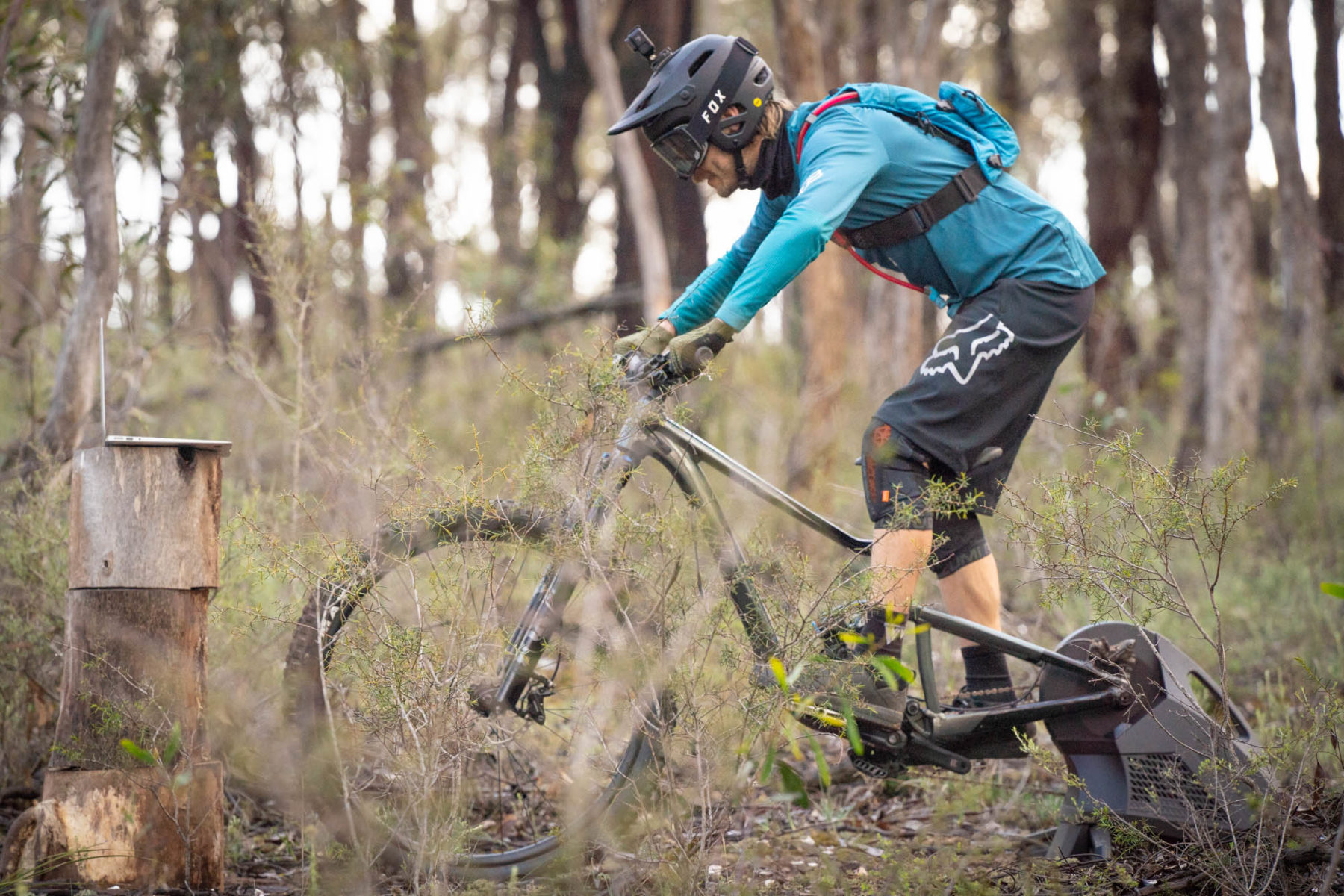
And you’ll be able to descend better
Fitness is temporary. It only takes a few weekends of over-saturated trails; or deciding that a wintery afternoon on the couch, with a hot toddy in hand, watching Too Hot to Handle on Netflix (don’t lie, we know you watched it, because we did too), sounds more enticing than heading out for a ride, and you’ll be struggling your way through an easy session. Worse, your descending skills begin to suffer because you burned too many matches on the climb.
“On the mountain bike as you start to get tired, your skills get a little bit sloppy, and you can’t really ride a trail as well as you could when you were feeling stronger and fresher. Zwift and indoor training helps you develop your base strength and fitness, so when you do get onto a trail, you’re already in good shape — you can ride harder and longer and faster really,” Sheppard says.

Anything else I should know?
We are going to talk a lot about watts, power, and watts per kilo (W/kg) after the break. But before we go any further, let’s chat FTP or ‘Functional Threshold Power’, and why it’s crucial.
FTP is the power, in watts, which you can theoretically hold for an hour based on your current fitness. It is arguably the most important figure for indoor training, because intervals are set as a percentage of your FTP, and know your threshold will help you figure out the right category for group rides and races.
Zwift will give you an FTP estimate by taking 95% of your 20min average power from any ride. If you’re racing or doing a hard group ride, this figure may not be too far off, but if you’re just riding along, it’s worth exactly what you pay for it. To get an accurate number — especially when you’re just starting out in the game — you’re going to need to do an FTP test.

To put it plainly, FTP tests suck and you’re going to have to go to a deep dark place to peg the right number down, but you’ll be better off if you do — not just for Zwifting, but also for establishing where your fitness is currently at, and where you want it to go.
Zwift has two types of threshold tests which can be found using the workout menu; either the FTP test/FTP (shorter) or Ramp Test/Ramp Test Lite — we’d recommend the latter.
The FTP test/FTP (shorter) both extrapolate your threshold based upon a 20-min effort within the workout. These extended high intensity efforts are extremely difficult to pace properly and even riders who are well versed with interval training get it wrong — which can skew the results. A ramp test, on the other hand, uses 1-min stair step intervals, which get progressively harder. It’s basically a cycling version of that horrible ‘beep test’ that you were forced to do at school. There is no pacing; instead, you just try to hit the power targets until you reach exhaustion — simple right?
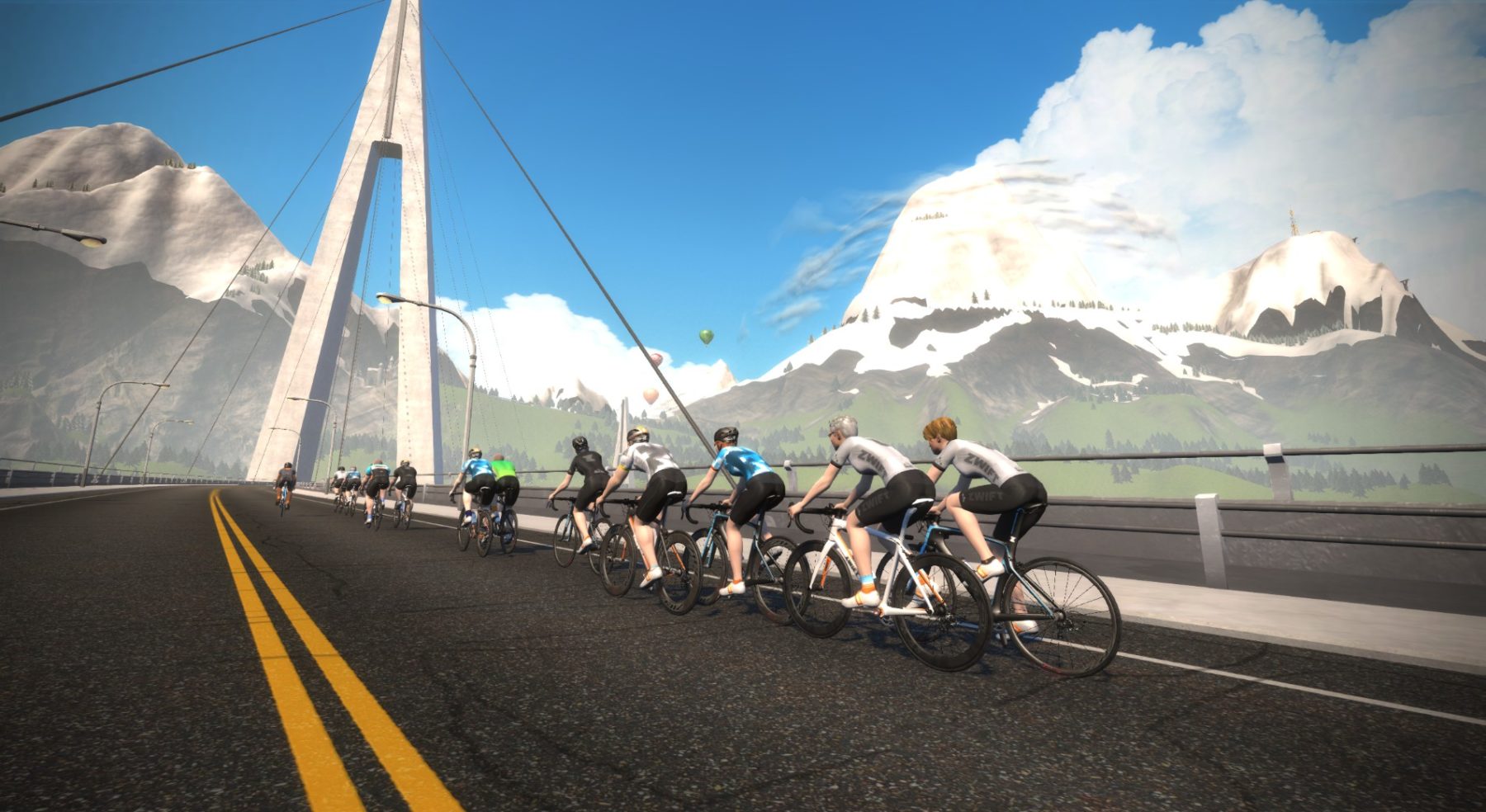
Your weight matters
The basis of Zwift is power; the algorithm in the game takes how many watts you’re pushing and translates that into speed based on your bike and wheel combo, the surface you’re riding over, and most importantly your weight. Zwift runs on the honour system as far as riders inputting their correct weight, and ‘weight doping’ is a problem in the game — our pals over at CyclingTips put together an in-depth feature on the topic.
Zwift converts your power into watts per kilo (W/kg) which directly correlates to your speed in the game. Pulling on our mud-splattered lab coats for a moment, as you may recall from your high school physics class, it requires more force to move an object with larger mass, than an object with a smaller mass.
So if two riders are in a group riding at 250-watts, and one weighs 70kg, and the other weighs 80kg, this equates to 3.5W/kg and 3.1W/Kg respectively. Riding over flat ground, both these riders would go about the same speed. However, just like in the real world, nary a route in Zwift is pancake flat, and because it takes more force to move a heavier object, the heavier rider will need more watts to go the same speed as the lighter rider when the road goes up. Dropping your weight a few kilos can make you ride faster in the game, but you’re only cheating yourself if you do so.
Zwift categorises group rides and races based on watts/kilo. Having an understanding of this ‘watts per kilo’ thing is crucial so that you don’t sign up for a 3.5-4.0W/kg group ride, and find yourself getting dropped like a hot pie.
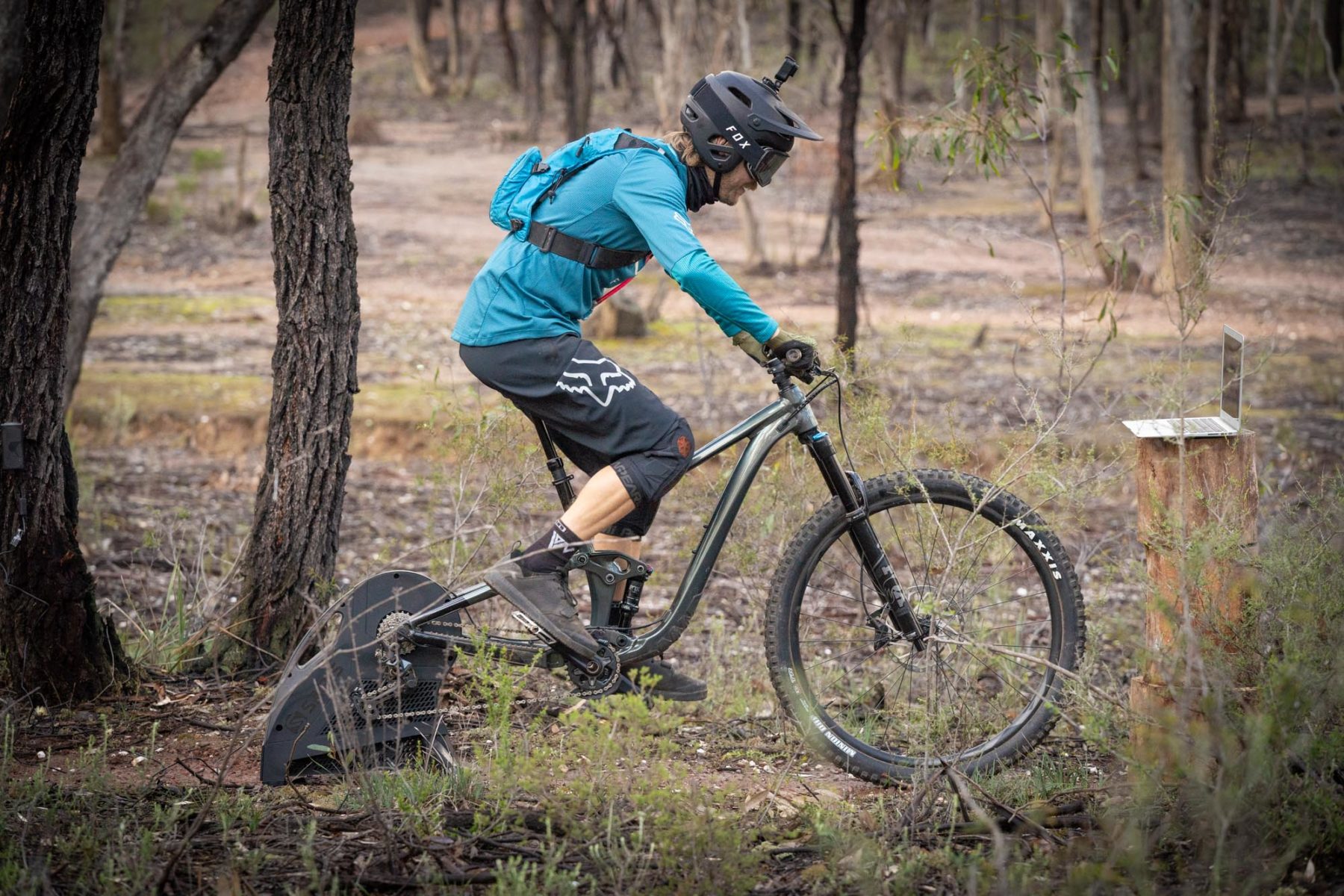
Workouts and Training plans
Group rides and races on Zwift are fun, and your fitness will improve if you do them frequently. But, the fastest way to get quicker is structured interval workouts, and Zwift has a library bursting at the seams with leg and lung burning sessions. If you’re anything like us, scrolling through a workout library is a bit like trying to find something to watch on Netflix. You can scroll, and scroll, and scroll, and scroll, and still be absolutely no closer to figuring out how you will spend the next hour. Lucky for you Zwift also has inbuilt training plans that will pull specific sessions and give you a schedule to follow.
There are currently four off-road specific training plans; Dirt Destroyer, Gravel Grinder, Pebble Pounder and Singletrack Slayer as well as workout a series built by 4-time Cape Epic champion Annika Lanvgard.

“These cater to a variety of different riding types, with the Pebble Pounder being our entry-level plan. Singletrack Slyer is our plan targeted at more experienced riders looking to maximize their training. In addition to these training plans, we also have a number of workouts in the main library developed through our partnership with the Absa Cape Epic. This library contains an additional 16 workouts that can be treated as stand-alone workouts, or can be followed in sequence,” Lalonde explains.
“In addition to these existing workouts, we also run a number of stand-alone group workouts in-game. We’ve had rides led by the likes of Nino Schurter and Kate Courtney in recent months for example,” Lalonde continues.
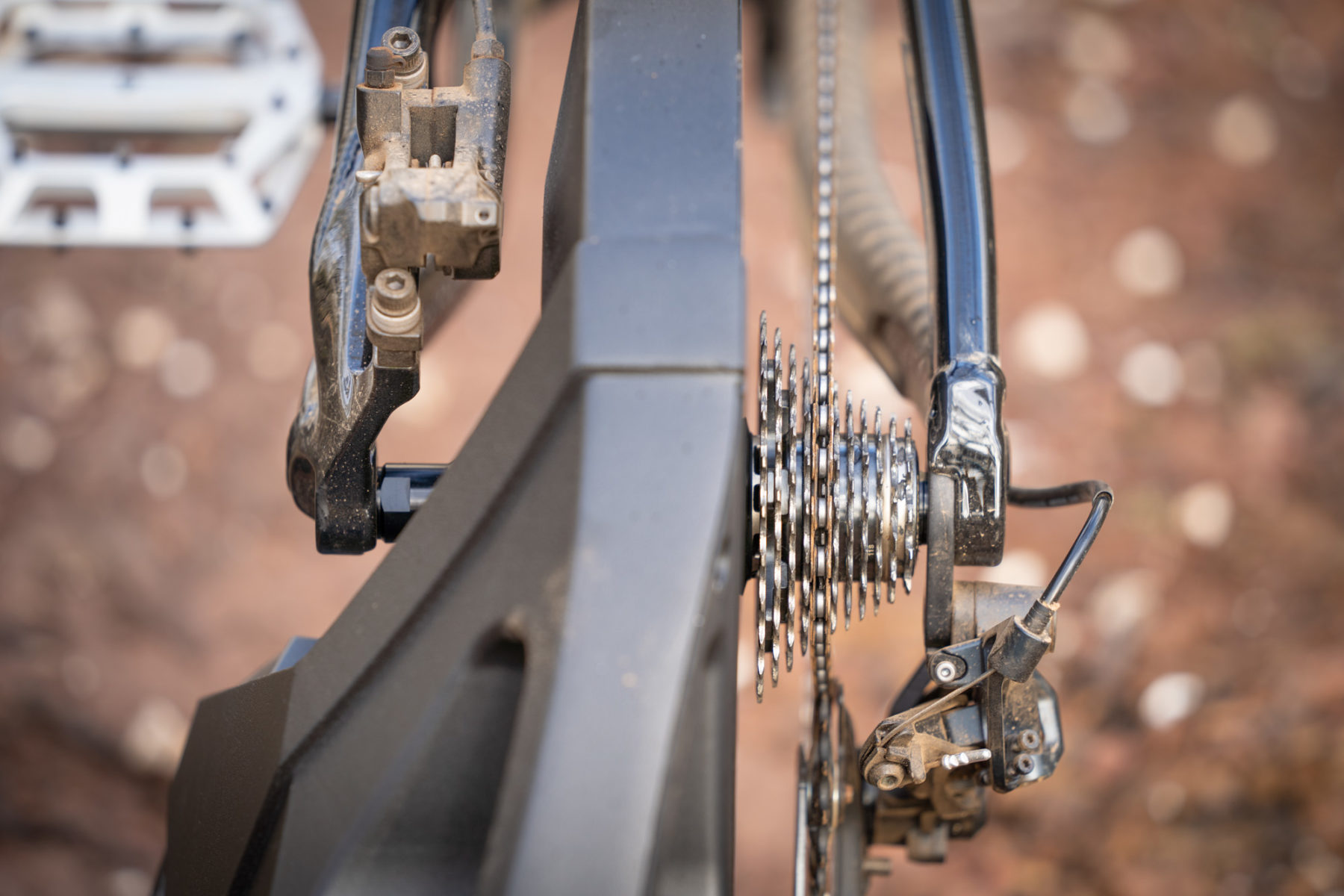
What do you need to get started?
At this point, you’re probably wondering how to join the fun. First, you’ll need a trainer. Ideally, it would be a direct drive smart trainer – we’ve got a Saris H3, which at $1,499 AUD, is about as fancy as trainers get. These have built-in power meters and a regular freehub to fit on a cassette, so you connect your bike directly to the trainer — hence ‘direct drive’. Not only do they offer more accurate power readings, but also automatically adjust the resistance based on instructions from Zwift or any other compatible training app. Unfortunately, wheel off smart trainers don’t come cheap.
If you’re offended by the price of a direct drive smart trainer, their wheel-on cousins have the same technology inside, albeit with a bit less accurate power measurement and less resistance on tap. They still offer all the interactivity and are a great option if you’re just getting into indoor training. If you do opt for one of these, make sure to pick up a slick, or trainer specific tyre.
Dumb trainers have no electronics whatsoever, but you can still enjoy Zwift if you have either a powermeter or speed and cadence sensor. Zwift needs a power source to make your avatar ride in the game, so if you have a powermeter, pair it to the app and you’re ready to ride — though the resistance won’t react to what’s happening on screen.
If you don’t have a power meter there is no need to fret; every trainer has a known power curve and taking into account your speed and cadence, the app can calculate ‘virtual power’ to get you started.

Is that all I need?
Not quite. As Sheppard so eloquently put it, “if you don’t have a fan, you need a fan.”
You will also want something to keep your phone/tablet/laptop handy to use the companion app, whether that be a table, some kind of a mount like a Quadock, or several logs stacked together.
Regardless of the trainer you’re riding, you’ll need to double-check that it has provisions for your rear axle. High-end direct drive trainers come with end caps to suit pretty much every axle and hub standard, bar Superboost; however, some mid-range units like the Tacx Flux models, don’t come with said adaptors, but they are available for purchase.

Depending on your setup you may also need to purchase a cassette and or freehub body for your direct drive trainer. Every direct drive trainer comes with an 11-speed HG freehub body installed, so if your bike uses an HG cassette, you’re golden. But if you’re on SRAM’s XD driver, you have two options, either buy an XD driver compatible with your new trainer (every brand makes these) or go for an HG compatible 12-speed cassette like the Sunrace MZ90.
Wheel-on trainers were designed when quick release was still the primary standard for attaching wheels to bikes, and their basic form hasn’t evolved all that much over the years. However, just about every trainer brand makes a thru-axle adapter, and there are options from third-party manufacturers like the Robert Axle Project.
One more thing you WILL need is a good set of bib shorts. You’ll be sitting in a mostly stationary position for an extended period of time, and it will take a toll on your undercarriage. Limit your saddle soreness and wear a proper set of bib shorts.
Then, of course, you will need a phone, tablet, computer or Apple TV to run the app.
If you have all of the above, you’re ready to roll. Get yourself logged in and we’ll see you on a Repack Ride – yiew!
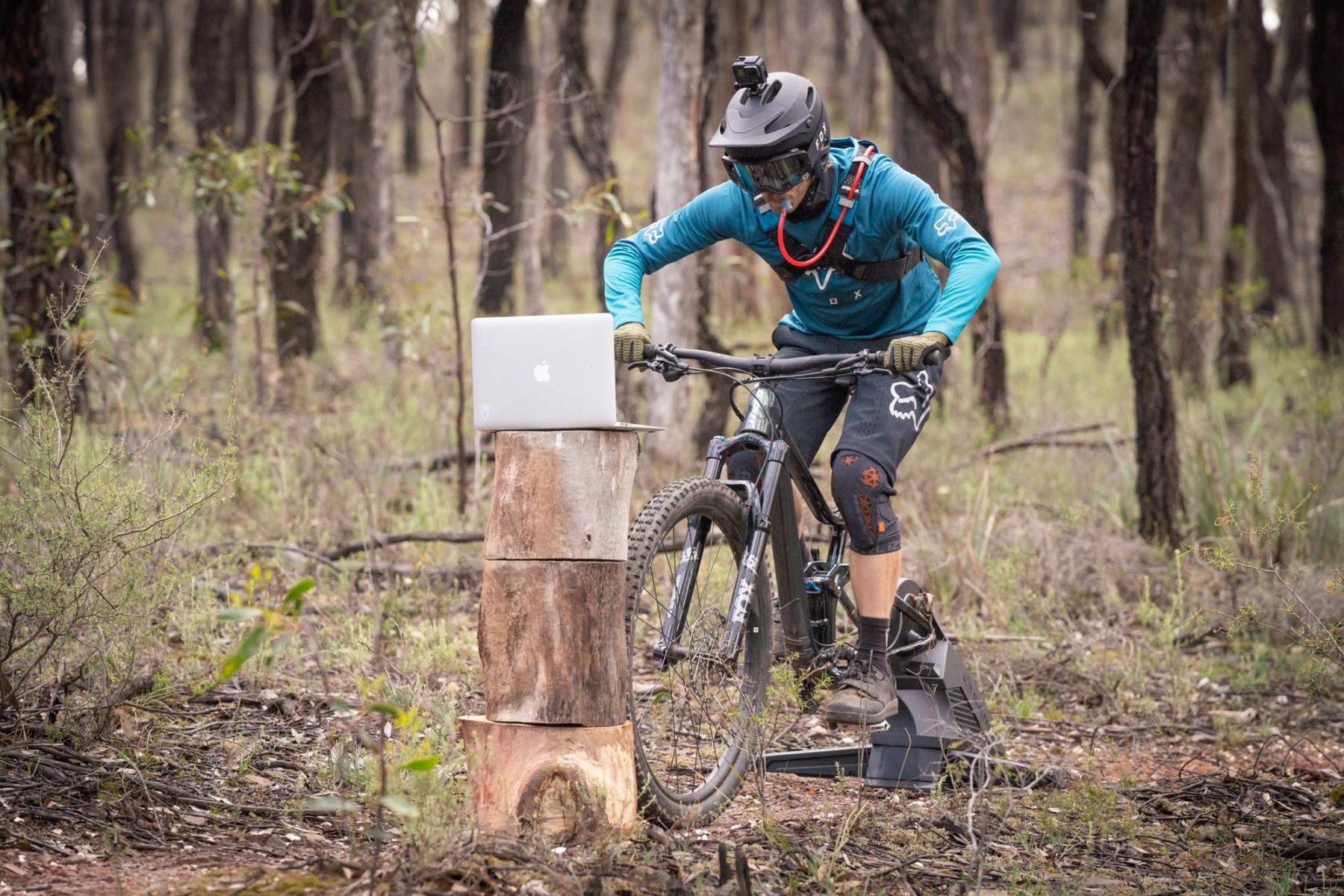
Mo’ Flow Please!
Enjoyed that article? Then there’s plenty more to check out on Flow Mountain Bike, including all our latest news stories and product reviews. And if you haven’t already, make sure you subscribe to our YouTube channel, and sign up to our Facebook page and Instagram feed so you can keep up to date with all things Flow!





